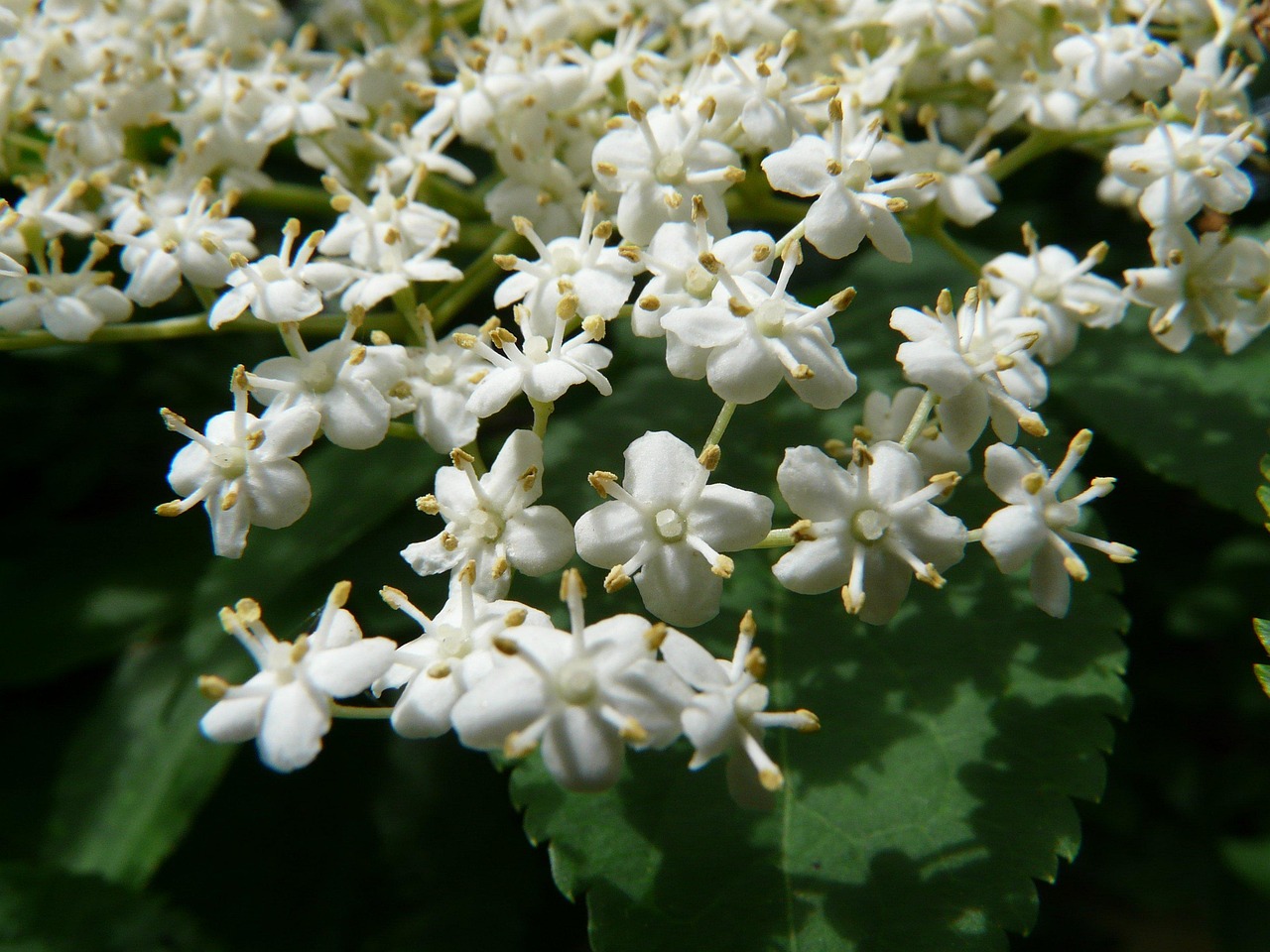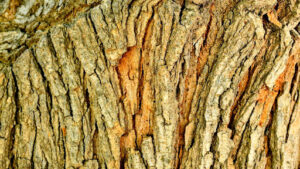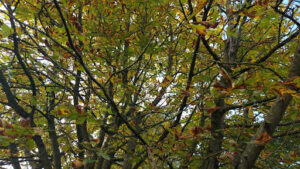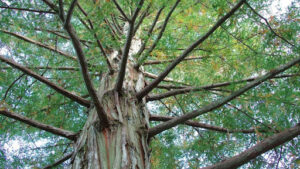How to Identify a Box Elder Tree: Key Features & Tips

- October 3, 2025
- By Jason Sinclair
Knowing how to identify a box elder tree is useful, especially if you’re dealing with your yard or property. These trees can pop up pretty much anywhere, and while they grow fast, they also have some quirks. For starters, their wood is quite brittle, meaning they can break easily in storms, which can be a real nuisance if one falls on your fence or, worse, your house.
Why Learn How to Identify Box Elder Tree

Plus, box elders are known for self-seeding aggressively. This means you might find little saplings popping up in places you really don’t want them, like right next to your house foundation or even in your garden beds.
Here are a few reasons why getting familiar with this tree is a good idea:
- Pest Control: Box elder bugs, which are drawn to the tree, can become a real problem. Knowing you have a box elder nearby can help you prepare for these bugs before they try to move into your home.
- Property Management: Understanding how to identify them helps you decide whether to keep them or remove them. Their rapid growth and tendency to spread can sometimes overshadow more desirable plants.
- Safety: Because the wood is weak, identifying a box elder, especially a large one near structures, can be important for assessing potential storm damage risks.
It’s not just about knowing what it is; it’s about understanding its behavior and how it might affect your space. Being able to spot one early on can save you a lot of hassle down the road.
Leaf Shape and Arrangement: Key Clues for Identification
When I’m trying to figure out if a tree is a box elder, the leaves are usually my first stop. They’re a bit different from your typical maple, which can be confusing at first. Instead of having those classic, single, hand-shaped leaves, box elder leaves are compound. This means each leaf is actually made up of several smaller leaflets attached to a central stem, kind of like a feather. Most of the time, you’ll find three or five leaflets on a single leaf stalk, and they can look surprisingly like poison ivy, which is something to watch out for if you’re sensitive to it.
The arrangement of these leaves on the twig is also a big hint: they grow directly across from each other, or opposite. This is a common trait for maples, but combined with the compound structure, it really points towards a box elder. The leaflets themselves are usually a few inches long, and their edges are often toothed or have a few shallow lobes. The top side is a lighter green, while the underside tends to be a bit paler, almost grayish-green.
Here’s a quick rundown of what to look for:
- Leaf Type: Compound, meaning multiple leaflets on one stem.
- Number of Leaflets: Typically 3 or 5, but sometimes more.
- Leaflet Shape: Often oval or lance-shaped, with toothed or lobed edges.
- Arrangement on Stem: Opposite, growing directly across from each other.
It’s worth noting that while the common box elder has these features, there are also cultivated varieties with different leaf colors, like gold or pinkish margins. These are often grown for ornamental purposes, but they still share the basic leaf structure of the wilder box elders. If you’re curious about different types of trees, understanding the leaf structure is a great starting point, and you can find more information on identifying various species, like the American beech tree, which has very different leaf characteristics.
The texture of box elder leaves is also a bit unusual for a maple. They don’t have that smooth, waxy feel you might expect. Instead, they can feel a bit puckered or rougher to the touch. It’s a subtle detail, but it helps distinguish them from other maples that might have similar leaflet counts or arrangements.
How to Identify the Box Elder Tree by Its Trunk
When I’m trying to figure out if a tree is a box elder, I always take a good look at its bark. It’s one of those features that can really give it away, especially as the tree gets older. Young box elders tend to have smoother bark, often a light brown or grayish-brown color. It’s not particularly remarkable at this stage, kind of plain, really. But as the tree matures, things change. The bark starts to develop furrows, becoming more deeply grooved. These grooves are typically narrow and run vertically along the trunk. It’s not like the thick, rugged bark you see on some oaks, but it’s definitely more textured than when it was young.
I’ve noticed that the color can vary a bit, but generally, it stays in the brown to grayish-brown range. Sometimes, especially after a rain, it can look a bit darker. It’s worth remembering that box elders aren’t known for having the strongest wood, and this can sometimes be reflected in the bark; it might not be as uniformly thick or as deeply ridged as on a more robust tree.
Here’s a quick rundown of what I look for:
- Young trees: Smooth, light brown to grayish-brown bark.
- Mature trees: Bark develops narrow, vertical furrows or grooves.
- Color: Generally brown or grayish-brown, can darken when wet.
- Texture: Becomes more textured with age, but not usually deeply rugged.
It’s important to remember that bark can change quite a bit depending on the tree’s age and the specific growing conditions. So, while bark is a good clue, it’s best to use it along with other identification features like the leaves and the overall shape of the tree.
Flowers and Seeds: Spotting Box Elder Samaras

When I’m trying to figure out if a tree is a box elder, I always look at its flowers and seeds. It’s a pretty reliable way to tell, especially if you catch the tree at the right time of year. The flowers themselves aren’t super showy, you know? They’re usually a yellowish-green color and appear in spring, around the same time the new leaves start to unfurl. You’ll notice that male and female flowers are different. The male flowers tend to droop down a bit, looking like wispy green tassels with light brown stamens. The female flowers, on the other hand, have prominent lime-green pistils and hang in drooping clusters on stalks. Only the female trees produce the seeds, which are the real giveaway.
These seeds are what most people recognize as the “helicopters” or samaras. They hang in long, messy clusters, and they really stick around. You’ll see them on the tree all through winter and into early spring. Each seed has a wing, and they’re often found in pairs, looking a bit like tiny propellers. This shape helps them travel quite a distance when they fall, which is why box elders can pop up in so many places. If you’re looking at a female tree after pollination, those blossoms will turn a brighter green. It’s pretty neat how they spread. I’ve seen areas completely covered with box elder seedlings that came from just one parent tree. It really shows how prolific they are when it comes to making more of themselves. You can find out more about identifying different types of maple trees here.
Here’s a quick rundown of what to look for:
- Flowers: Appear in spring with new leaves. Male flowers are drooping green tassels; female flowers are green with prominent pistils in drooping clusters.
- Seeds (Samaras): Produced only by female trees. They are winged, often in pairs, resembling propellers. They hang in clusters and persist through winter.
- Seed Clusters: Can be quite profuse and hang down, sometimes described as looking a bit messy.
It’s worth noting that the seeds, while a good identification marker, can also be a bit of a nuisance. They tend to drop and can create a mess, especially after storms. Plus, the box elder bug, which feeds on the tree, can sometimes become a problem for nearby homes.
If you’re trying to distinguish between male and female trees, the presence of these samaras is your clearest indicator. The female trees are the ones you’ll see with those characteristic winged seeds hanging in clusters. It’s a simple but effective way to tell them apart, and it helps confirm if you’re looking at a box elder.
How to Identify Box Elder Tree by Growth Habit and Size
When I look at a box elder, the first thing that strikes me is how quickly it grows. It’s not a tree that takes its time; it really shoots up. This rapid growth means you’ll often see them in places where other trees might struggle, like disturbed ground or along roadsides. They tend to be medium-sized, usually reaching heights between 40 and 70 feet. The crown can be quite broad, sometimes spreading as wide as 45 feet, and it often looks a bit messy or uneven. It’s not uncommon to see them with multiple trunks, or a single trunk that’s a bit squat and gnarled.
I’ve noticed that their branches can be a bit weak, which is why they sometimes break, especially in storms. This can give the tree a ragged appearance, but it also creates nooks and crannies that wildlife seems to appreciate. For instance, fallen branches can create hollows that birds and small mammals use for shelter. It’s interesting how a tree that might not be the most aesthetically pleasing can still provide a home for so many creatures.
Here’s a quick rundown of what to expect size-wise:
- Height: Typically 40-70 feet tall.
- Crown Spread: Can reach 25-45 feet wide.
- Trunk: Often multiple, or a single, stout trunk.
While they grow fast and can get quite large, their wood is relatively soft. This contributes to their tendency to break in high winds. It’s something to keep in mind if you’re looking at a box elder near a house or a walkway.
It’s worth noting that box elders are quite adaptable and can grow in a variety of conditions. I’ve seen them thriving in dry areas and also near water. This adaptability is a big part of why they are so widespread across North America, especially in the western United States. You can find out more about their adaptability and where they grow best on sites discussing native tree species.
Their fast growth and ability to handle tough spots mean they can sometimes be seen as a bit of a weed tree, but their presence does serve a purpose in the ecosystem. They are one of the most common and adaptable urban trees you’ll find.
How to Identify Box Elder Tree in Different Seasons

How to identify box elder tree in different seasons is definitely a big question, and here are some suggestions: Observing a box elder tree throughout the year can really help in pinpointing its identity, even when you’re not seeing its leaves. Each season brings its own set of clues.
In the spring, you’ll notice the tree’s new growth. The young twigs and branches are often a distinctive green color, which is a good indicator. The flowers appear around April or May. They’re not showy like some other maples; instead, they’re small and can be yellowish-green. If you see clusters of these, especially on female trees, it’s a strong sign.
Summer is when the leaves are fully out. Remember, box elder leaves are compound, meaning they look like they’re made up of several smaller leaflets, usually three to five, arranged along a central stem. This is quite different from most other maple trees, which have simple leaves with lobes radiating from a single point. The leaves themselves are typically a light green and can have a slightly puckered texture, lacking the waxy coating you might find on other maples. The branches remain green during this time.
As fall arrives, the leaves of the box elder don’t usually put on a spectacular show. You might see some yellow or orange hues, but it’s generally unremarkable compared to other maples. The real giveaway in autumn, and even into winter, is the seeds. These are the classic samaras, often called ‘helicopters’ or ‘whirlybirds,’ that hang in long, drooping clusters. They mature in the fall but tend to stay on the tree well into the next spring. These persistent seed clusters are a very reliable way to identify a box elder when other features are less obvious.
Winter is when the tree’s structure really stands out. The brittle branches, often with a somewhat irregular shape, are visible. The bark on mature trees is typically brown and can have a rougher texture. You’ll still see those seed clusters hanging on, providing a clear identification marker even without leaves. The green color of the younger twigs might still be apparent if you look closely.
Here’s a quick rundown:
- Spring: Green twigs, inconspicuous flowers.
- Summer: Compound leaves (3-5 leaflets), light green color.
- Fall: Unremarkable leaf color, persistent seed clusters begin to show.
- Winter: Visible branch structure, persistent seed clusters, brown bark on older trees.
It’s worth noting that the wood of the box elder is quite brittle. This means you might see broken branches, especially after storms, which can be another characteristic to observe, though not exclusive to this tree.
If you’re interested in growing trees, even for something like bonsai, understanding these seasonal changes can be quite helpful.
How to Identify Box Elder Tree from Common Look-Alikes
It’s easy to get a box elder mixed up with other trees, especially if you’re just starting. I know I’ve done it. The biggest confusion seems to be with other types of maples. For instance, many maples have leaves that grow directly across from each other on the branch, but box elders tend to have leaves that are arranged a bit more staggered. This difference in leaf arrangement is a good clue.
Another thing to watch out for is the leaf itself. Box elder leaves are compound, meaning they look like they’re made up of several smaller leaves, usually three to five, attached to a central stem. This is quite different from the single, palm-shaped leaves you see on most other maples.
Here’s a quick rundown of what to look for:
- Leaf Shape: Box elders have compound leaves that resemble ash leaves, typically with 3-5 leaflets. Most other maples have simple, palmately lobed leaves.
- Leaf Arrangement: Box elders usually have opposite or subopposite leaf arrangement, while many other maples have strictly opposite leaves.
- Twigs and Bark: Young box elder twigs are often greenish and can turn purplish. The bark on mature trees is usually brown and furrowed. Some other maples have smoother bark or different twig colors.
Remember, while box elders are technically maples, they really stand out from the crowd with their unique leaf structure and growth habits. Don’t get discouraged if you mix them up at first; it takes a bit of practice.
Sometimes, people mistake them for ash trees because of the leaf shape, but ash trees typically have opposite leaf arrangement and their leaflets are usually serrated all the way to the tip, unlike the often lobed leaflets of the box elder.
Beginner-Friendly Tips for How to Identify Box Elder Tree
Alright, so you want to get a handle on spotting a box elder tree without pulling your hair out. It’s not too tricky once you know a few key things. First off, pay attention to the leaves. Unlike most maples that have single, lobed leaves, box elders have compound leaves. Think of it like ash leaves, which is why one of its common names is ash-leaved maple. Each leaf stalk usually has three to seven leaflets, and they’re typically a lighter green. The easiest way to tell them apart from poison ivy, which can look similar, is the leaf arrangement: box elders have opposite leaves, while poison ivy’s are alternate.
When you’re looking at the trunk, the bark on mature trees is usually brown and has a rough, furrowed texture. Young branches and twigs, though, are often a noticeable green color. This green hue on new growth is a pretty good giveaway, especially in winter when there are no leaves.
Here’s a quick rundown of what to look for:
- Leaves: Compound, with 3-7 leaflets that look like ash leaves. They’re arranged opposite each other on the stem.
- Twigs/Young Branches: Often a distinct green color.
- Bark: Brown and furrowed on older trees, smoother and greenish on younger ones.
- Seeds: Look for clusters of ‘helicopter’ seeds, called samaras, which hang around into spring.
Box elders are fast growers, but their wood is also quite brittle. This means they can break easily in storms, so if you see a tree with a somewhat messy or ragged-looking crown, it might be a box elder.
Don’t forget to check out the seeds, or samaras. Box elders produce these winged seeds in clusters, and they tend to hang on the tree for a good while, even into the spring. They look like little helicopters. If you’re in an area where you’re trying to manage trees, knowing how to remove seedlings is a good skill to have. For younger ones, just pulling them out by the roots works well. If they’re a bit more established, you might need to look into other methods, but always be careful if you’re using herbicides, as their roots can get tangled with other plants you might want to keep. If you’re dealing with a lot of tree issues in your area, you might want to consult with local tree care services, like those in Wyoming, MI, who understand the local species.local tree care
Want to know how to spot a box elder tree? It’s easier than you think! We’ve got simple tips to help you identify them, even if you’re new to trees. Check out our guide to learn the key features. For more expert tree care advice and services, visit our website today!
Frequently Asked Questions
What makes a boxelder tree different from other maple trees?
I’ve noticed that boxelder trees are unique compared to other maples. The most striking difference for me is their leaves. While most maples have simple leaves that grow directly from the stem, boxelders have compound leaves, meaning several leaflets are attached to one stem. It’s the only native maple in North America that does this, and it makes them look a bit like poison ivy sometimes.
How can I identify a boxelder tree by its leaves?
When I look at boxelder leaves, I check for a few key things. They are compound, usually with three to five leaflets on each leaf stalk. The leaflets themselves are often toothy along the edges and can be a bit lobed. Unlike many other maples, their leaves don’t feel waxy; they have a more textured, almost puckered feel. The young branches and twigs are also a distinctive bright green.
What do boxelder seeds look like, and why are they important?
The seeds of a boxelder tree are quite memorable. They grow in long, hanging clusters and are called samaras. They look like little ‘helicopters’ or propellers. Female trees produce these, and they help the tree spread easily. I’ve seen them stay on the tree through winter and then cover the ground in spring, leading to lots of new seedlings.
Are boxelder trees considered a nuisance?
Yes, I often find that boxelder trees can be a nuisance. They grow very fast and have weak wood, which means their branches break easily, creating a mess. They also spread very quickly from their seeds and can sprout up where you don’t want them. Plus, they are known to attract boxelder bugs, which can sometimes find their way into homes.
What is the typical size and growth habit of a boxelder tree?
From what I’ve observed, boxelder trees can grow quite rapidly, especially when they are young, often reaching a good height within their first 15 to 20 years. They can get up to about 65 feet tall, but they often have a more irregular shape. Their branches can droop, and they tend to have a broad, sometimes messy-looking crown. They’re also known to grow well in wet areas.
Are there any benefits to having a boxelder tree?
While I often focus on the challenges boxelders present, I do recognize some benefits. Their flowers bloom early, which is good for pollinators. Because they grow so well near water and in wet soil, they can help stop erosion along stream banks. Also, when their lower branches droop or break, they can provide shelter and habitat for small animals on the ground.
